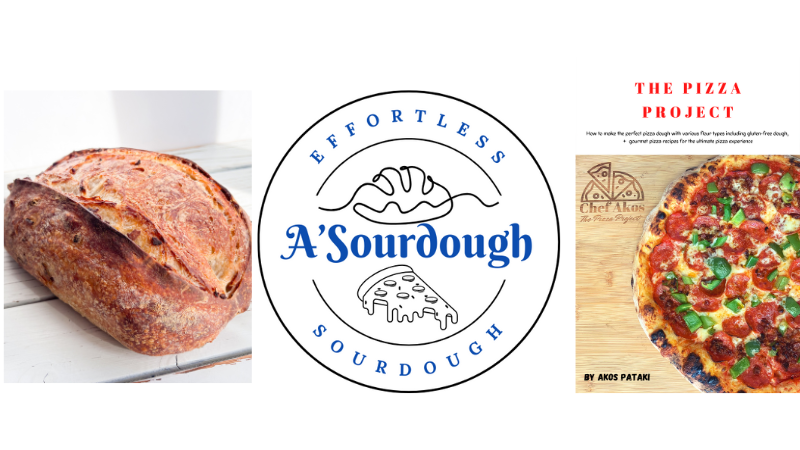Sourdough: the most natural way to make bread
Most people connect the word sourdough to some kind of bread, even if they are not sure about the difference between a regular bread in the store and a loaf of sourdough. The difference is the way they are fermented and the leavening agent in it. The goal of this post is to explain the basics of this form of dough fermentation that originated as early as ancient Egypt.
WHAT IS A SOURDOUGH?
It is basically the world’s oldest form of dough fermentation. Sourdough is a type of bread/pizza crust that is naturally leavened by an agent called sourdough starter instead of using commercial baking yeast. In traditional sourdough recipes, you’ll find four ingredients: sourdough starter, water, salt and flour. It’s about as natural as you get when it comes to bread. The lactic acid content of the sourdough starter gives sourdough bread its distinctive flavour.
Pumpkin shaped Sourdough Bread
"If you take flour, water, (wild) yeast and salt, and play around with time and temperature, what comes out of the oven is something utterly transformed."Sourdough baking requires minimal equipment and simple ingredients. Purism is part of the appeal amongst enthusiasts around the world.
unknown sourdough enthusiast
SOURDOUGH PIZZA CRUST MADE WITH ORGANIC SPELT FLOUR
Now let’s talk about the most important ingredient of a sourdough:
THE SOURDOUGH STARTER
A sourdough starter is a culture of yeasts and bacteria. It is created when a mixture of flour and water slowly starts to ferment naturally, Thanks to the wild yeast that is everywhere around us. As a result, we get a pungent, gloppy brew that will act as a natural substitution for the store-bought baker’s yeast in our pizza or bread dough. It is also referred to as “mother yeast”.
| WELL-FED STARTER. BUBBLY AND STRONG, READY TO MAKE THE DOUGH. |
In order to keep the bacteria culture alive in the sourdough starter, it needs to be fed regularly by adding fresh flour and water to it. The starter has a cyclical life. When it gets fed with flour and water, it expands in the jar (doubles or even triples its mass). That is when the culture is the strongest, so it’s time to use it in our dough. Then the starter collapses as it gets “hungry”, losing its power as the rising agent. It is not optimal to bake with collapsed “mother yeast”, because it can mess up any recipes’ fermentation timeline. Until someone becomes an experienced sourdough baker, it is better to stick to using a starter that is at its prime. The cycle starts again by feeding it with flour and water. The surplus starter is discarded or can be used to make delicious pancakes, waffles or other breakfast items.
Even if we do not use the sourdough starter for baking, it still needs to be fed regularly in order to keep it alive.
It is beneficial to beginner sourdough bakers to start their journey with a very active starter culture. Since the whole process might seem a little bit complicated, it definitely makes it easier if the starter does not have to be made from scratch. You can order our very active sourdough starter from our Etsy store: A's Sourdough Etsy Store
Using the most ancient leavening method in my own bread or pizzas is very satisfying. I always feel mesmerized by following the footsteps of our ancestors. It is like a time-travel for me. Not to mention that with some practice and patience, anyone can bake wonderful sourdough loaves in their own kitchen, and they will never buy store-bought bread again!
Happy Baking!

Comments
Post a Comment